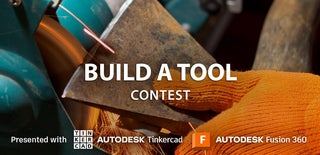Introduction: A Pallet Breaker... From a Pallet
I've seen a few pallet breaker projects on here, but most involve buying steel and welding up. This pallet breaker is built from an existing pallet and some screws so it has a much lower skill and equipment cap. It's probably not as sturdy, and is a lot bulkier, but it worked pretty well (once some design flaws were ironed out).
Plus building a pallet breaker with a pallet? That's like, pallet-ception! Should be like crack for the Instructables crowd, no?
Supplies
You'll need:
- three stringers from an existing pallet, plus something to pack either side of the handle - I used some thin plywood, roughly 5mm (1/4"). Hardwood would probably be better, but softwood worked for me, you likely just need to go a little slower when using the breaker.
- screws, long enough to go through one stringer and well into the next.
- large screws, the kind you'd use for outdoor decking
- regular woodworking tools: drill, driver, saw and some clamps, plus a pencil, ruler and measuring tape.
Step 1: Cutting the Parts
Cut the stringers as follows:
- Leave one intact as the handle
- Cut one in half for the two sides. I went fancy and cut it at a 45 degree angle, but square works too
- Cut the remaining section in half, and then cut a section (fork tines) from each half so that it's roughly the width of one of your stringers plus the width of a pallet plank. The remaining part will be a stopper that'll make the fork tines much sturdier.
Once you're done, you should have one handle, two sides, two fork tines and two stoppers.
The plywood should be cut to the width of a stringer, then cut in half so that you have a spacer for each side.
Finally, cut a curve into the bottom of both the handle and the two plywood spacers so that it rolls a bit when you're levering on a pallet.
Step 2: Attach Sides
This step's pretty straightforward - attach the two sides to the handle, leaving a gap of a stringer height at the bottom. If there's extra spacer sticking out, you can cut it flush so it looks nice. I just screwed them together - if your stringers are hardwood, you'll want to drill pilot holes before driving the screws.
Note: this picture is from my first attempt, and I made the gap at the bottom too large - version two (three?) had some extra packing to reduce the gap. But if you learn from my mistakes, you can just do it right the first time :*P
Step 3: The Fork Tines Attempt #1 (dont Do This)
Don't attach the forks like this - this was my first attempt, I'm including it so that you can understand the final design a little better. The basic idea was that the fork tines would be attached normally, and then the blocks underneath would help prevent them pivoting under leverage.
Sadly, this didn't work very well. It did dismantle a pallet, but the tines bent fairly drastically under load, and warped some of the screws. Hmm. Back to the drawing board...
Step 4: Fork Tines, Attempt #2 (getting Better)
Attempt #2 was a lot better. I packed out the gap so that I had more leverage, but the main problem was that the tines rotated too much, so I put the stoppers on the sides above them instead. This was a lot better, but still felt flimsy with too much rotation when levering. More thinking required...
Step 5: Fork Tines, Final Design
So after some thought, I figured attempt #2 was on the right track, it just needed a more solid connection between the tine and the stopper, and a more sturdy connection between the tine and the side piece. MORE SCREWS, basically.
So: four screws in the elbow between the tine and the side, clamp the stopper hard against the tine, and whack a dirty great decking screw through the two to hold it together. Hopefully the pictures help that description make sense.
I drilled a pilot hole from the stopper into the tine at about a 30 degree angle to help guide the bolt. Now the join is sturdy enough that I can break apart most pallets.
About the only tweak I've made to the final design above is to cut a small slope on the bottom of the tips of the tines to make it easier to insert between the boards of a pallet.
Step 6: Using the Pallet Breaker
(I don't have a pallet easily to hand, but will update this step with pics when I break apart another one)
There are two methods for splitting apart a pallet with this tool, you can use them both at different points in splitting.
Method one is to put the fork tines between the boards. Since the tines are the same width as the pallet's stringer, it gives you good leverage and it's relatively easy to get a board off. This is the easier method to start with - if the pallet's light you can stand on it while levering.
Method two is to put the gap in the breaker over a stringer on the pallet so you have a tine on either side, then lever the board loose. You might need to lever the same way on the side stringers too if the board is firmly nailed down. This method is easier than the previous one, but you need a stringer to rest on - either the one in the pallet, or a separate stringer from one you've already broken up.
Don't forget that the reason to use a pallet breaker is that you can use the *minimum* force to break a pallet apart, which means fewer broken boards, and fewer nails breaking off and getting stuck in the stringers.

Participated in the
Build a Tool Contest











